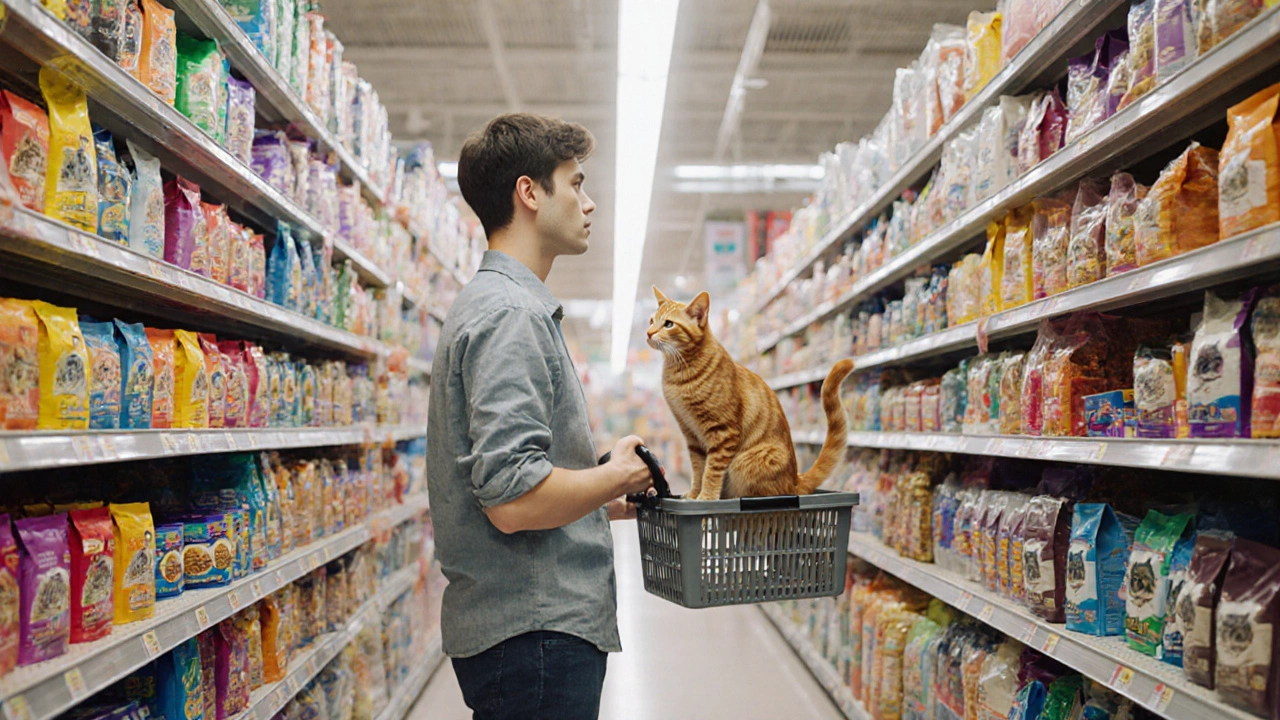Grain‑Free Cat Food: What Every Cat Owner Should Know
When talking about grain‑free cat food, a dry or moist diet formulated without wheat, corn, rice or other cereal grains. Also called grain‑less cat food, it aims to mimic a cat’s natural prey‑based eating pattern while avoiding ingredients that can trigger sensitivities.
Understanding this diet means looking at Cat Nutrition, the balance of protein, fats, vitamins and minerals cats need for health. It also ties into a grain‑free diet, any feeding plan that excludes cereal grains and focuses on animal‑derived proteins. One key concern is Allergenic Ingredients, components like gluten, soy or certain fillers that can cause skin or digestive issues. Finally, many owners pair dry options with wet cat food, canned or pouched meals that boost moisture intake and flavor variety. These entities connect: cat nutrition influences the choice of a grain‑free diet, which must avoid allergenic ingredients, and wet cat food can complement the dry formula for a balanced intake.
A grain‑free diet offers several practical benefits. High‑quality protein sources—like chicken, turkey or fish—provide the essential amino acids cats can’t synthesize on their own. Low carbohydrate levels help maintain a healthy weight and reduce the risk of diabetes. Many formulas replace grains with pea protein, chickpeas or sweet potato, delivering fiber without triggering grain‑related sensitivities. Additionally, free‑range cats often show better skin condition and reduced scratching when grain‑derived irritants are removed. However, not all grain‑free products are equal; the source of replacement carbs matters, and some may still contain hidden fillers that mimic grains.
Choosing the Right Grain‑Free Cat Food
Start by reading the ingredient list front‑to‑back. Look for a named animal protein as the first ingredient—"chicken meal" or "salmon"—instead of generic "meat and bone meal". Next, check the carbohydrate source: true grain‑free options often cite "peas", "lentils" or "pumpkin" rather than just "corn gluten". Verify that the product meets AAFCO nutrient profiles for your cat’s life stage. If your feline has a known allergy, scan for common triggers like soy, dairy or artificial preservatives. Compare the guaranteed analysis with wet cat food options; a mixed feeding plan can provide extra moisture, which supports urinary health. Finally, consider the brand’s recall history and vet endorsements to gauge overall safety.
With those basics covered, you’ll be ready to explore the range of articles below. They dive into specific topics such as mixing wet and dry meals, spotting hidden dangers in dry cat food, and how often you should feed your cat. Use the insights here as a lens to pick the most suitable grain‑free choices for your furry friend.
Posted By Bryndle Redding On 15 Oct 2025 Comments (0)
The #1 Best Cat Food in 2025: Expert Review and Comparison
Discover the #1 best cat food of 2025, why it tops the list, how it compares to other top brands, and expert tips for choosing the perfect diet for your feline.
READ MORE